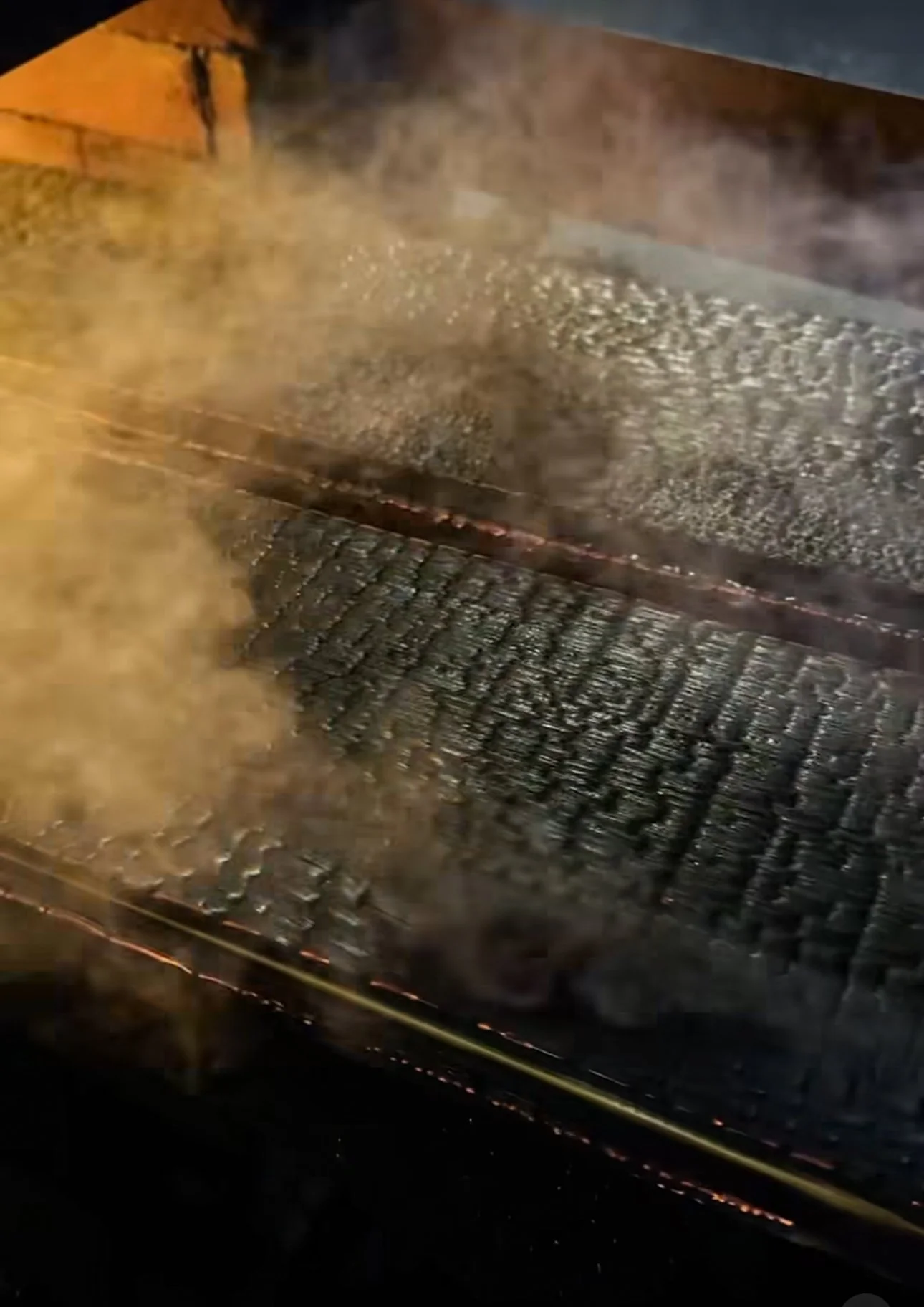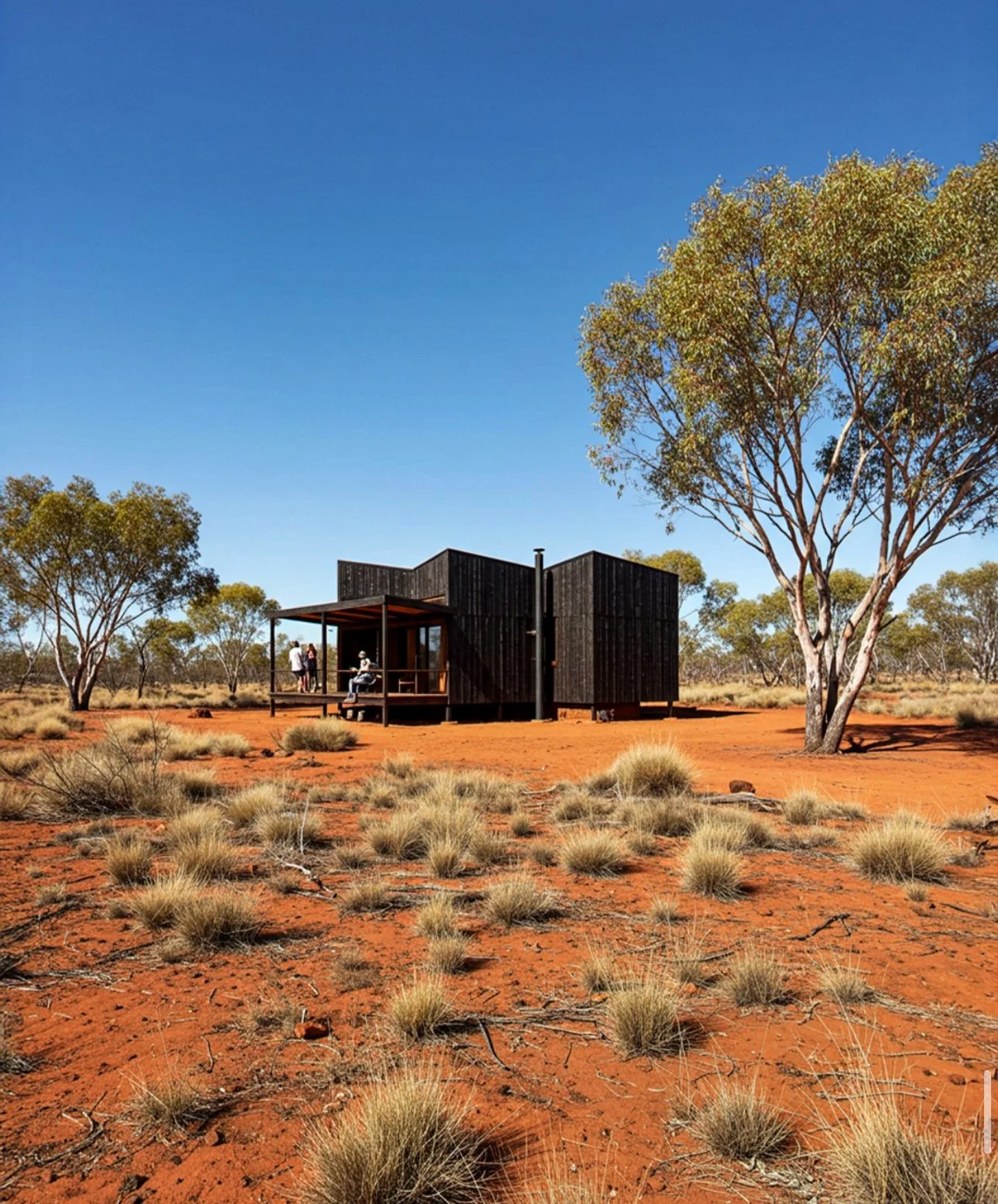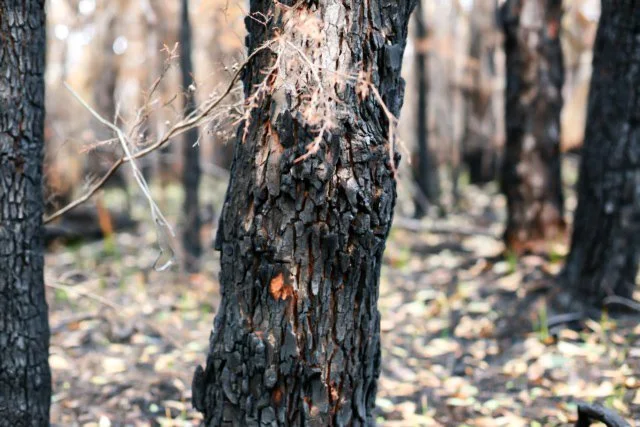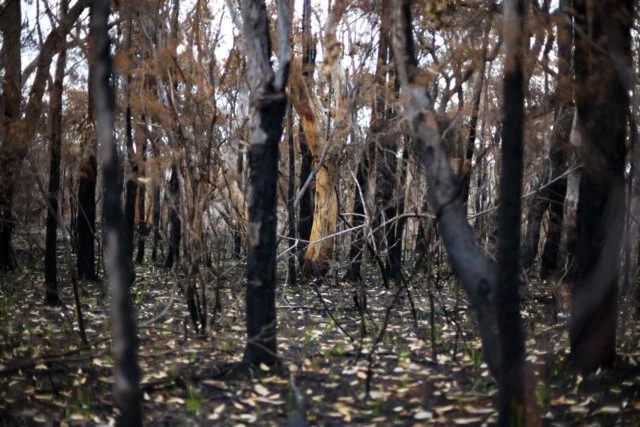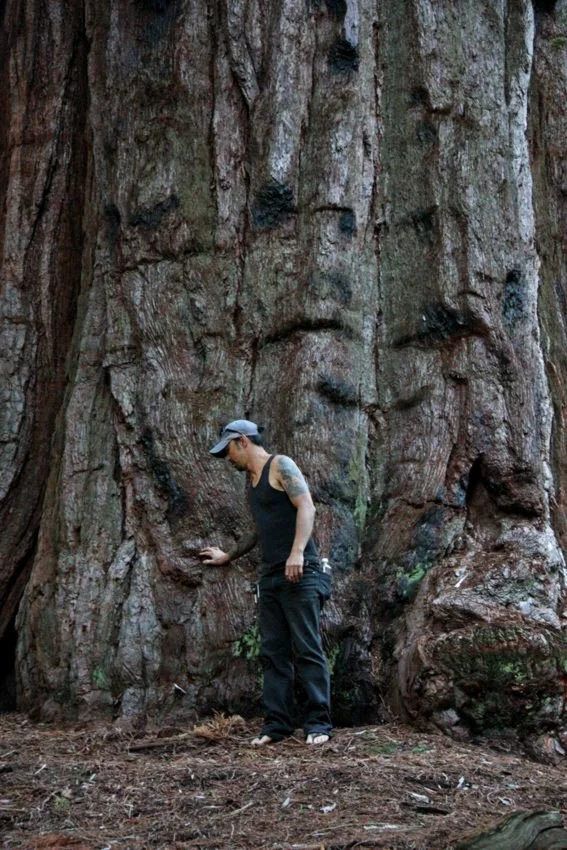Fire Memory - The Charred Timber and the Australian Landscape
Yakisugi timber in process - fire as preservation.
(Journal Entry No. 01 - plonc. studio)
These reflections represent plonc. studio’s independent research and are written in good faith. All cultural and technical references are drawn from publicly available sources.
I. Fire as Craft and Culture
Across centuries, Japan developed a quiet ritual of preservation known as yakisugi (often mis-termed shou sugi ban). By charring the surface of cedar planks, craftsmen discovered that the carbonised layer made the wood resistant to rot, insects, and future flames. The process, recorded since the Edo period, turned destruction into defence - fire became protection.
Charred timber dwelling, Central Australia - fire written into architecture
In contemporary Japan, architects such as Terunobu Fujimori and Kengo Kuma continue to employ yakisugi not as nostalgia but as philosophy: fire as collaborator, not enemy.
Australia’s relationship with fire is older still. Indigenous cultural-burning practices, refined over tens of thousands of years, have shaped the continent’s ecological rhythm. Controlled burns restore biodiversity, prevent catastrophic wildfire, and regenerate native seed banks. Both traditions, distant yet aligned, teach the same truth: material renewal is born through transformation. Fire is not the opposite of life, it is part of its memory.
II. The Poetics of Scarring
Charred timber holds a paradox. Its surface appears ruined, yet it is strengthened by its wound. The carbon crust absorbs and reflects light differently each hour, matte at dawn, metallic by dusk, revealing that endurance is never smooth.
In geological time this logic repeats itself: rock hardens under pressure, minerals crystallise through heat, landscapes are sculpted by erosion. The same alchemy runs through human craft. A chipped edge, a carved groove, a scorched board - these are not signs of damage but of becoming.
Charred forest, Central Coast NSW - renewal emerging through ash.
Australian design’s renewed fascination with raw surfaces, unrefined stone, and visible tool marks signals a quiet rebellion against sterile perfection. Like the charred plank, such materials refuse concealment. They wear their process openly, inviting the viewer to read the story of their making.
III. Toward a Design of Renewal
plonc. studio reads in these parallels a philosophy for our time, a movement from polish to presence. If Japan’s yakisugi preserves through burning and Australia’s land renews through fire, then design too must learn to embrace exposure rather than avoid it.
Central Coast NSW — new shoots after fire, renewal within ruin.
Surfaces should not imitate stability; they should record time. Relief, patina, and erosion become new architectural languages. The lesson of fire is not catastrophe but continuity, a choreography between damage and renewal.
To design with this awareness is to acknowledge that beauty is not made; it is revealed through endurance. Every material carries its own scar, its own intelligence. The role of design is to listen. This is the ethic of GeoLux - luxury that remembers its making; beauty that has faced the flame.
Ancient trunk, North America (circa 2006). The author pictured before geological time - standing within the slow intelligence of matter.
Sourcing & Accuracy
Yakisugi (shou sugi ban) - Edo-period technique using Cryptomeria japonica; the carbon layer increases durability. Documented in Japan Timber Journal (2018) and contemporary works by Fujimori and Kengo Kuma.
Cultural burning (Australia) - Indigenous fire-stick practices verified through CSIRO research and Firesticks Alliance; controlled burns regenerate native vegetation and maintain ecological balance.
Architectural parallels - Fujimori’s Takasugi-an Tea House; Kuma’s Nagaoka City Hall; John Wardle Architects’ Captain Kelly’s Cottage; Marra & Yeh’s charred-timber houses.
A meditation on fire as renewal - connecting Japan’s yakisugi craft and Australia’s cultural burning to a philosophy of materials that endure through transformation.

